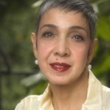Who was Marie Curie?
Description
More Details
044847896
9780451484468
Also in this Series
Published Reviews
Booklist Review
Stine's profile of Curie offers younger readers both a lucid explanation of how she earned her inarguable status as the most famous woman scientist in history, and also a well-told tale with valuable insight into the obstacles notably sexism that she faced and overcame to advance her career. Along with exploring her private life in enough detail to include the public scandal that arose from her relationship with Paul Langevin, and the later lives of her children and grandchildren, the author makes Curie and her era seem less remote by writing occasionally in an informal idiom: At the end of the school year, Maria's teacher told her father that Maria was stressed out. The illustrations are staid line drawings don't really entice, but for those seeking an easier alternative to Kathleen Krull's outstanding Marie Curie (2007), this fits the bill.--Peters, John Copyright 2014 Booklist
Booklist Reviews
Stine's profile of Curie offers younger readers both a lucid explanation of how she earned her inarguable status as "the most famous woman scientist in history," and also a well-told tale with valuable insight into the obstacles—notably sexism—that she faced and overcame to advance her career. Along with exploring her private life in enough detail to include the public scandal that arose from her relationship with Paul Langevin, and the later lives of her children and grandchildren, the author makes Curie and her era seem less remote by writing occasionally in an informal idiom: "At the end of the school year, Maria's teacher told her father that Maria was stressed out." The illustrations are staid line drawings don't really entice, but for those seeking an easier alternative to Kathleen Krull's outstanding Marie Curie (2007), this fits the bill. Copyright 2014 Booklist Reviews.





























































































































































































































































